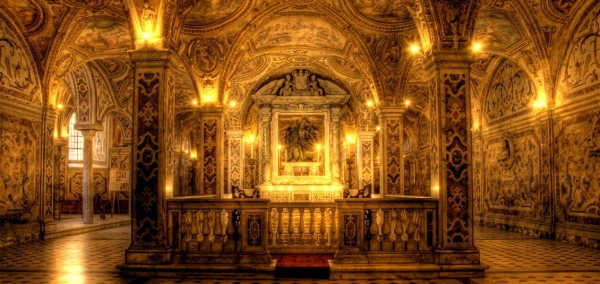The Salerno Cathedral, also known as the Duomo, is a prominent tourist attraction and the main church in Salerno, southern Italy. Dedicated to Saint Matthew, whose relics reside in the crypt, the cathedral’s foundation was laid in 1076 under Robert Guiscard’s rule and Alfano I’s episcopate. Simultaneously constructed with the Basilica of St. Peter Alli Marmi, the Duomo was consecrated by Pope Gregory VII in 1084.
In the 17th century, architect Ferdinando Sanfelice remodelled the interior in Neapolitan Baroque and Rococo styles. However, a 1930s restoration returned the Duomo to its original appearance. As the tomb of Pope Gregory VII, who resisted imperial church domination, lies within, the Duomo symbolizes the Italian Renaissance.
During World War II, the cathedral suffered damage when the Allies landed in Salerno as part of Operation Avalanche in 1943.
The Duomo’s striking external features include a mid-12th-century bell tower, standing 56 meters high in Arabic-Norman style, housing eight large bells. The façade boasts a Romanesque portal with Byzantine-style bronze doors from Constantinople, adorned with 56 panels depicting figures, crosses, and Jesus’ life stories. The entrance portico comprises 28 antique columns with pointed arches and lava rock intarsia, showcasing Arab art influences, and contains ancient Roman sarcophagi.
Inside, the Duomo features a nave and two aisles divided by pilasters, three apses, and notable artworks, including two mosaic-decorated pulpits, Francesco Solimena’s paintings, a 14th-century Gothic fresco of Madonna with Child, and the sepulchres of prominent figures such as Pope Gregory VII and Queen Margaret of Durazzo.
The crypt, believed to hold Matthew the Apostle’s remains, is a groin-vaulted hall with a basilica-like plan divided by columns. Restored by Domenico and Giulio Fontana in 1606-1608, the crypt features marble decorations added in the 18th century and ceiling frescoes painted by Belisario Corenzio, depicting scenes from the Gospel of Matthew and Salerno’s history.
The adjacent Duomo Museum houses artworks from various periods, including 13th-century silver statues of the Salernitane Martyrs and documents from the esteemed Schola Medica Salernitana, considered by some scholars, such as G. Crisci, to be Europe’s first university.



